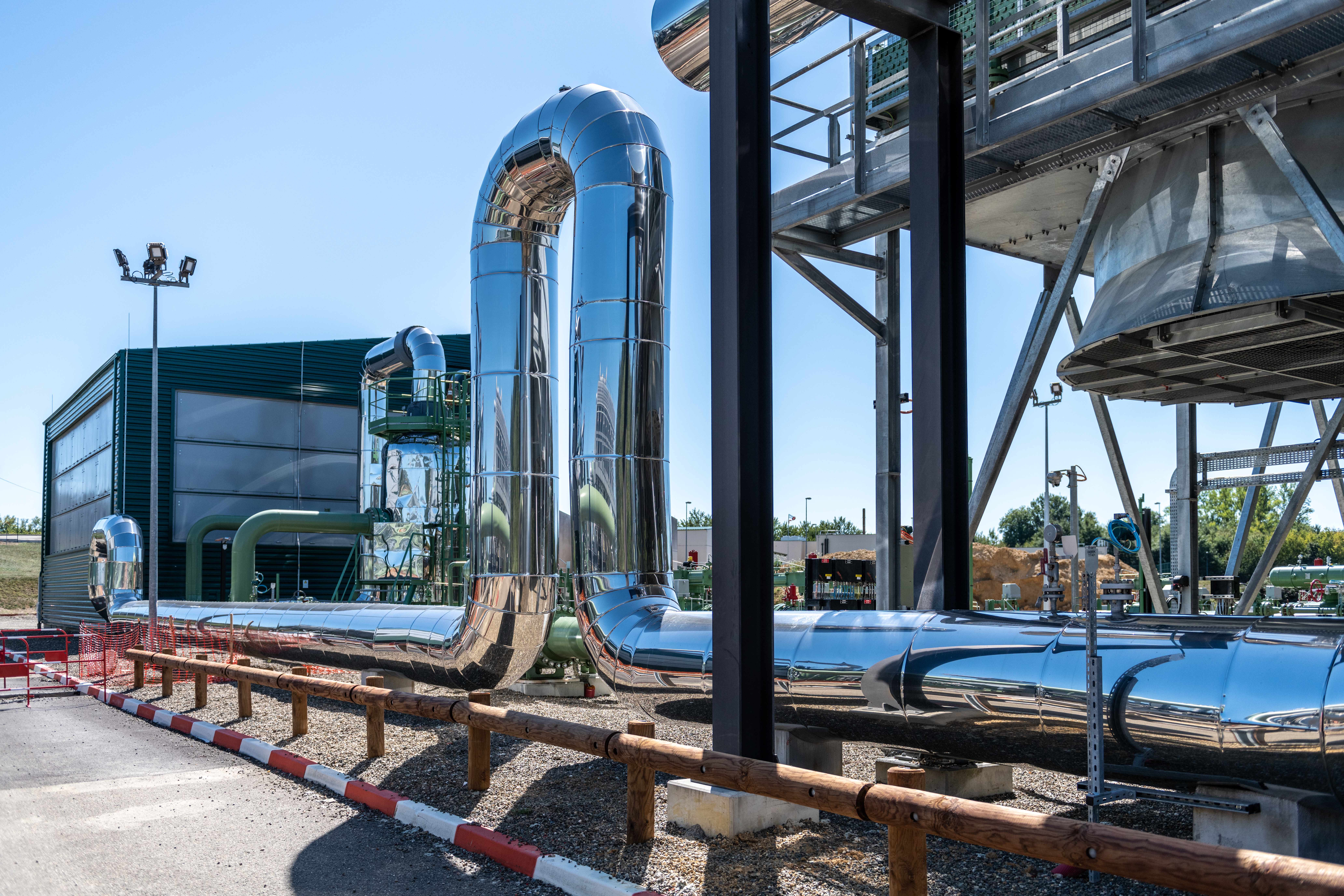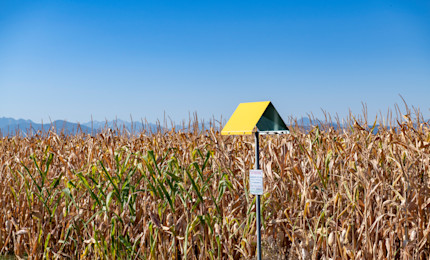Urgence gaz 0 800 028 800

Teréga: committed to reducing greenhouse gas (GHG) emissions
Reducing greenhouse gas emissions. This is the key challenge in trying to put a stop to the problem of climate change and the disruption it causes to the weather, the economy and society. States, businesses and citizens alike can all contribute to the collective effort at their own level. A review of Teréga’s targets and commitments on reducing GHG emissions.
According to the recent Barometer from Citepa (an association commissioned to create an inventory of French emissions), greenhouse gas emissions in France started dropping again in 2022. This was good news: after a significant 9% drop in 2020 compared with 2019 (linked to the Covid-19 pandemic), 2021 saw a +5.7% rebound. CO2 (million tonnes of CO2 equivalent) emissions then fell back by 2.7% in 2022. The report’s authors also underline that, globally, “greenhouse gas emissions continued to fall at the start of 2023, with a 4.2% drop from the first quarter of 2022”. These results are linked in particular to a framework and targets defined by the regulator which, on the world, European and national scale, has increased the number of incentives to cut greenhouse gas emissions. Since the United Nations Framework Convention on Climate Change held in Rio in 1997, and with the Kyoto Protocol and its target of reducing emissions from the six main GHG emitters by 50% in 2050 compared with 1990, and since COP21 and the Paris agreements arising from it, there have been a great number of initiatives. Of those, two mechanisms have been fundamental in effecting change: the Energy Transition for Green Growth Law (LTECV), which prioritises actions for the management of all forms of energy, and the National Low-Carbon Strategy (SNBC), which sets out the main guiding principles of energy and climate policy.
What is the LTECV?
Coming into force in 2015, the Energy Transition for Green Growth Law (LTECV) has the main
objective of reducing greenhouse gas emissions by 40% by 2030 compared with 1990 levels. To
achieve that, it draws on the Long Term Energy Schedule (PPE) which prioritises actions for managing
all forms of energy, particularly increasing the proportion of renewables in the French energy mix,
with a target of 32% by 2030. Teréga has contributed to workshops and public debate discussions on
the PPE.
What are the ambitions of the National Low-Carbon Strategy?
The National Low-Carbon Strategy (SNBC) is a planning document that sets out a roadmap for
reducing France’s greenhouse gas emissions up to 2050. To achieve that, the SNBC sets an
intermediate target of 40% by 2030 and 80% by 2050 compared with 1990 levels. The model on
which the SNBC is based consists firstly of diversifying the energy mix by reducing France’s
dependence on fossil fuels, but also of developing low-carbon industrial sectors with a view to
limiting energy imports. The SNBC’s roadmap obviously includes the development of renewable
energy. So France has set itself the target of 40% renewable energy in 2030, aiming to develop wind,
solar, hydroelectric and biomass all at the same time. Alongside this, there is an emphasis on
reducing final energy consumption by 40% by 2030 through improvements to building insulation,
electrical equipment performance, and sustainable transport. Finally, the SNBC provides for ongoing
support for research and innovation in the field of low-carbon energy.
Carbon Audit: better transformation through measurement
In France, the obligation upon companies with more than 500 employees, government departments and local authorities to calculate their carbon footprint did not come into force in a single step, but evolved gradually from 2009 to 2017. While the French expression for “Carbon Audit” (“Bilan Carbone”) is now part of everyday language, the term was only created in 2002 by ADEME (the French Environment and Energy Management Agency) Since 2011 the issue has been managed by the Carbon Audit Association, which has a key role to play in disseminating and implementing Carbon Audit methodology in France, thus contributing to the fight against climate change, helping organisations to measure, reduce and manage their greenhouse gas emissions.
The perimeters used for calculating GHG emissions, Scopes 1, 2 and 3: what are they?
The perimeters used for calculating greenhouse gas (GHG) emissions are commonly referred to as Scopes 1, 2 and 3. They are used to categorise and assess GHG emissions from an organisation or company, according to their source and how they are checked.
Scope 1 emissions include all direct GHG emissions resulting from a company’s activities. That includes emissions from the combustion of fossil fuels in the company’s systems, such as carbon dioxide (CO2) emissions from company vehicles, fixed equipment, industrial processes etc.
Scope 2 emissions cover indirect GHG emissions linked to the production of electricity, heating or cooling purchased and consumed by the company.
Scope 3 emissions include all other indirect GHG emissions associated with the company’s activities, beyond its own boundaries. From emissions linked to the company’s supply chain, through employees’ business travel, to emissions linked to the products sold by the company and the waste produced, Scope 3 emissions are often the greatest in terms of quantity, and may be the most complex when it comes to quantifying and managing them.
What are Teréga’s commitments on reducing its carbon footprint?
Aware of the climate challenges, Teréga has introduced monitoring of its greenhouse gas emissions – historically for scopes 1 and 2, and now for scope 3 as well – and its actions to reduce them. These actions are grouped together within a programme called BE POSITIF. Launched in 2017 and led by the Environment Department, this programme aims to reduce Teréga’s environmental footprint through a methodology called “MERCI” that involves monitoring, avoiding, reducing and compensating for impacts. This approach tackles the impacts of Teréga’s activities in a holistic way: energy management, reduction of emissions, and protection of biodiversity.
Scopes 1 & 2: concrete results
With the different actions it has introduced, Teréga had already recorded some encouraging results by the end of 2022: a 32% reduction in Scope 1 and 2 emissions compared with 2017, and a 21% drop in methane emissions. Those figures bear witness to Teréga’s steadfast commitment to sustainability, in line with its membership of the United Nations Environment Programme: the Oil & Gas Methane Partnership. This progress reflects Teréga’s significant contribution to the fight against greenhouse gas emissions and respect for its environmental commitments.
En route for Scope 3 optimisation
Since the start of 2023, Teréga has entered into discussions with its key suppliers so that they can work together to develop a low-carbon roadmap and identify common areas in which reductions can be made. Those emissions are chiefly to do with the purchase of goods and services, thus signifying a significant commitment to the overall reduction of its environmental impact. The whole set of actions and the ambitious roadmap Teréga has chosen to follow are an active and practical contribution to France and Europe’s net zero commitments ahead of 2050.
What is Teréga actually doing to meet its targets?
To reduce the carbon footprint of its activities and meet its targets, Teréga is introducing more initiatives and practical actions, such as the commissioning of “RECOMP” recompression systems for its compression stations at Barbaira, Lussagnet and Sauveterre-de-Guyenne, and on its storage centre at Lussagnet. The principle? To collect the gas from main compressor pipework and reinject it into the grid, releasing none of it into the atmosphere. By the end of 2023, the Lussagnet site will also be equipped with its own 12 GWh self-consumption solar power plant.
The human aspect is also central to Teréga’s strategy, with all its workers
benefiting from specific support on the major environmental challenges, particularly reducing GHG
emissions. By the end of 2023 they will all have received awareness training on climate change, with
workshops led by in-house speakers trained by the Climate Fresk association.
In addition, Teréga is pursuing its carbon offsetting strategy by supporting international projects such
as Clean Water, which ensures there are supplies of safe drinking water to the peoples of Ethiopia
and Eritrea. This offsetting strategy has also been applied since 2023 to national projects. For
example, Teréga is working with the CNPF (National Forest Ownership Centre) on afforestation
projects. In 2023, one such 5-hectare afforestation project at Sauveterre-de-Guyenne (Gironde)
received its accreditation. Demonstration of Teréga’s cherished strong roots in its territory, helping it
to contribute in ever more practical and active ways to the national GHG reduction targets through
the Low Carbon accreditation scheme operated by the Ministry of Ecological Transition.






